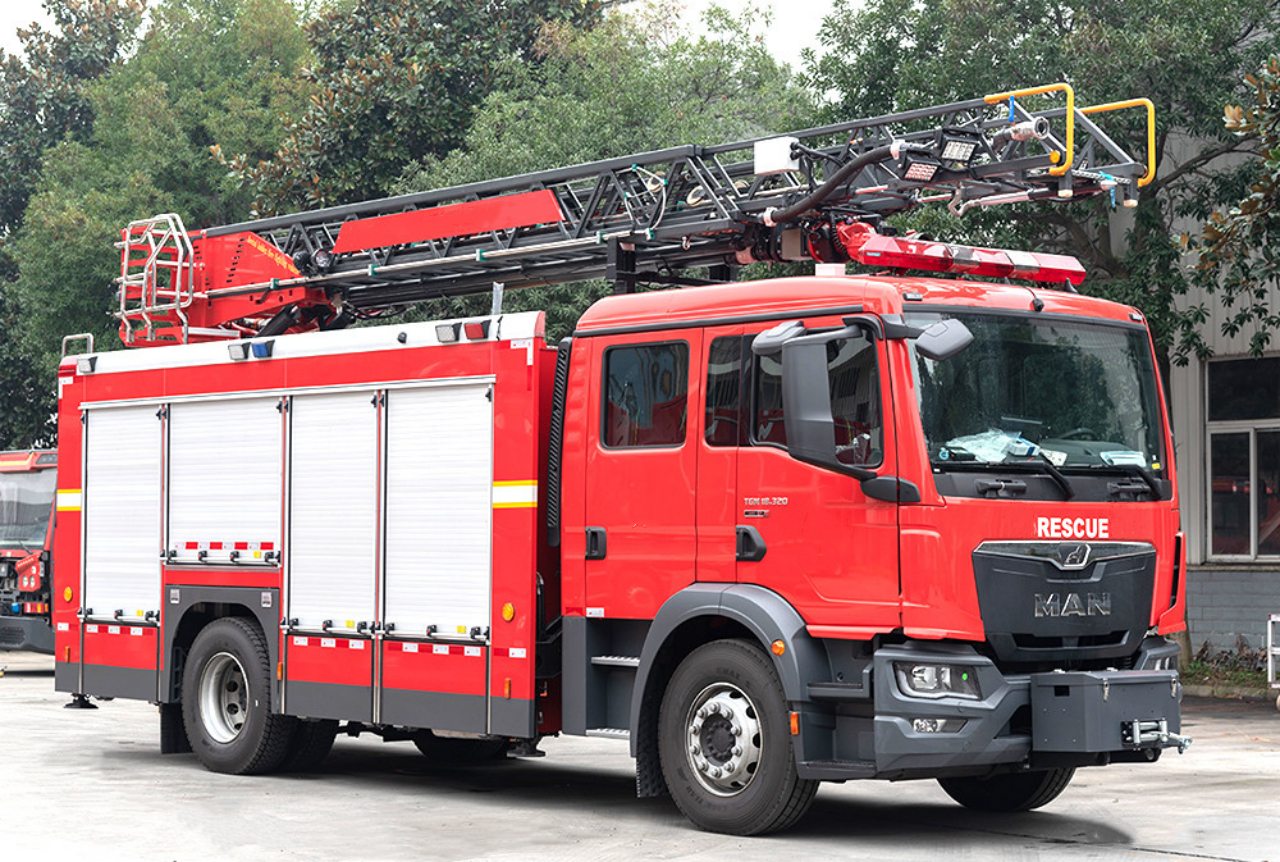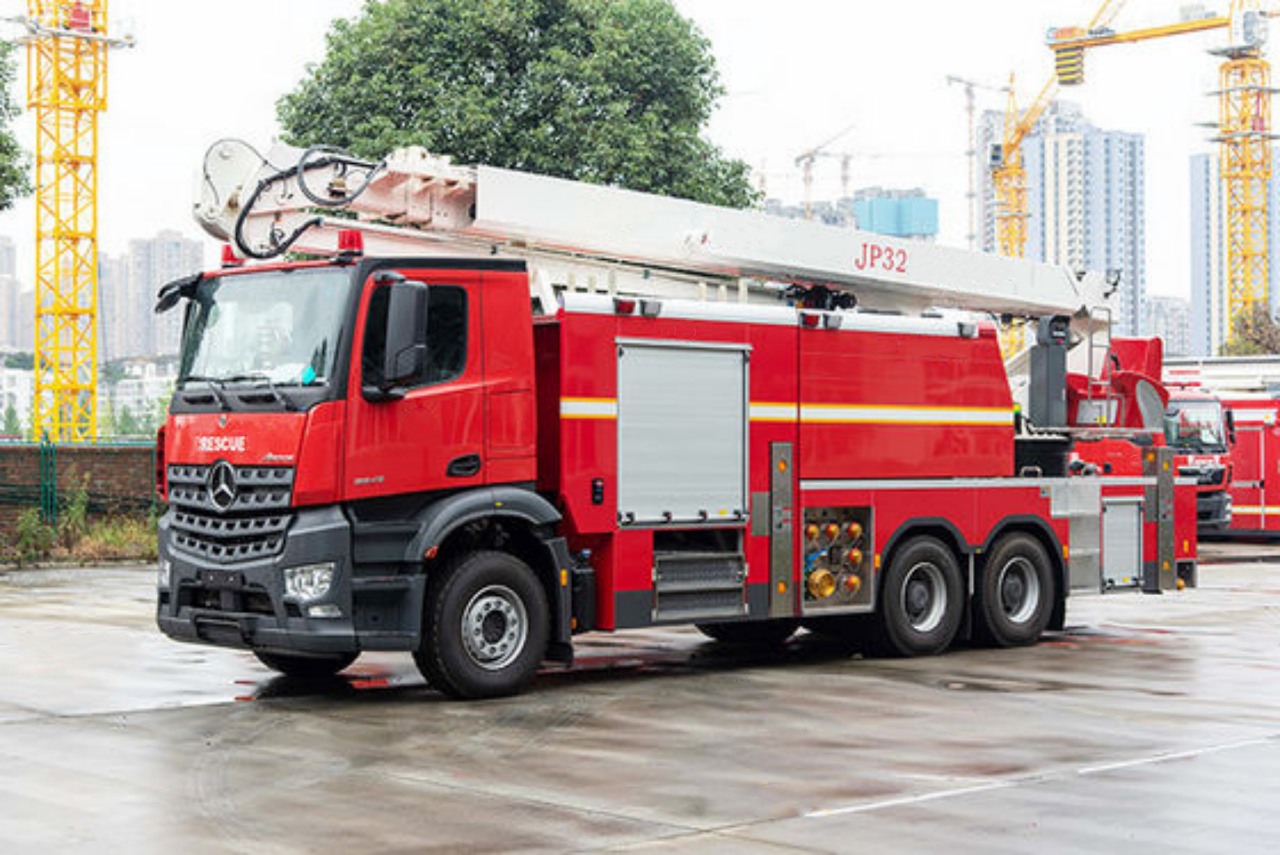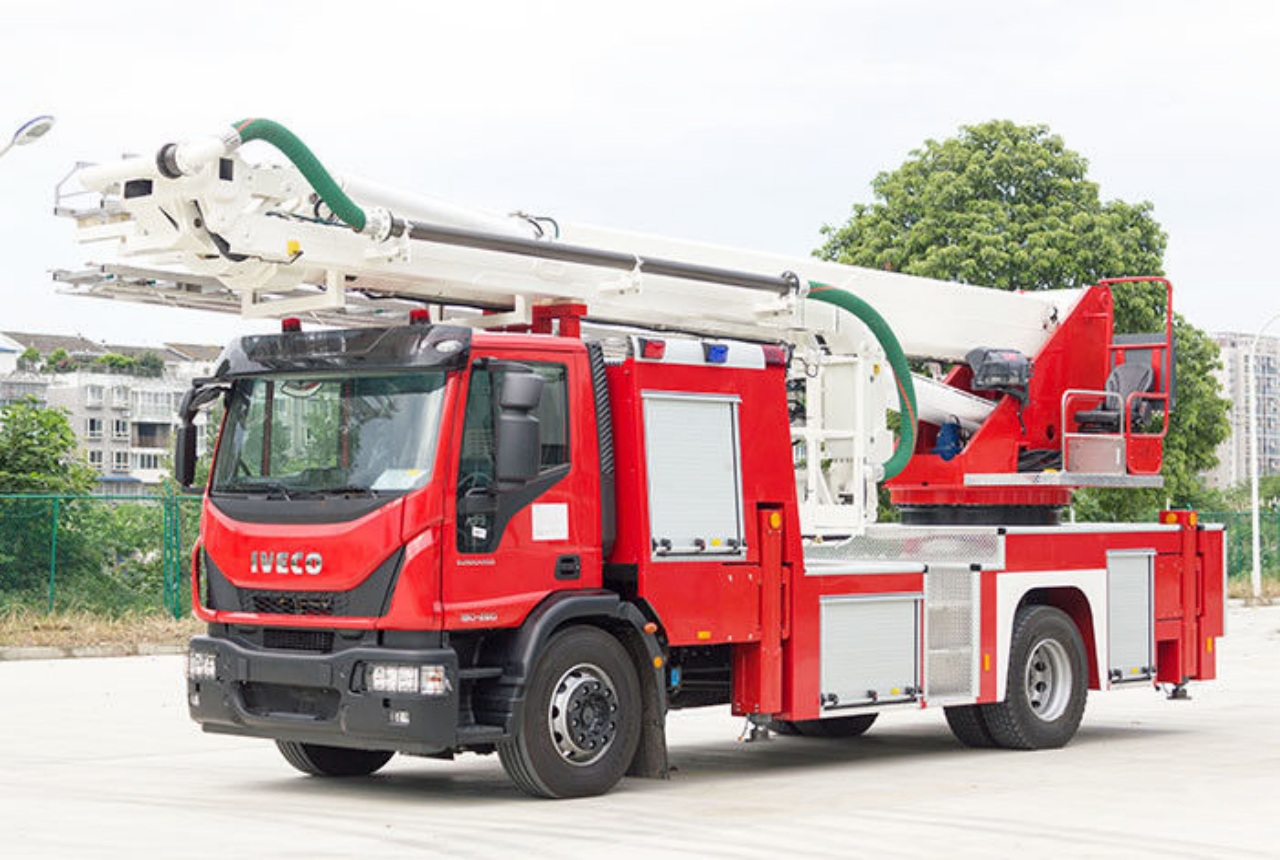Introduction
An aerial lift truck is a specialized vehicle equipped with a lifting mechanism designed to elevate workers, tools, and materials to high or hard-to-reach locations. These trucks are widely used in industries such as construction, telecommunications, utilities, tree care, and firefighting. They enhance safety and efficiency by allowing workers to perform tasks at height without the need for scaffolding or ladders.
Aerial lift trucks come in various configurations, each suited for specific tasks. Their versatility makes them indispensable in many industries where working at elevated heights is required. This article explores the types, components, applications, and safety considerations of aerial lift trucks.
Types of Aerial Lift Trucks
Aerial lift trucks are categorized based on their lifting mechanisms and intended applications. The primary types include:
1. Telescopic Boom Lifts
Telescopic boom lifts, also known as straight boom lifts, feature a long, extendable arm that provides a direct vertical or horizontal reach. These lifts are ideal for applications requiring extended reach, such as high-rise building maintenance, electrical line repairs, and tree trimming.
2. Articulated Boom Lifts
Articulated boom lifts, or knuckle booms, have multiple joints that allow the arm to bend and maneuver around obstacles. They are well-suited for accessing difficult-to-reach areas in tight spaces, making them popular in urban construction projects and utility work.
3. Scissor Lifts
Scissor lifts use a crisscrossing mechanism to raise and lower a platform vertically. While they do not extend horizontally, they provide stability and high load capacity, making them ideal for indoor maintenance, warehouse operations, and construction projects.
4. Bucket Trucks
Bucket trucks, also called cherry pickers, feature a hydraulic lifting arm with a bucket at the end to carry a worker. These trucks are commonly used by utility companies for power line maintenance and tree trimming services.
5. Tracked Aerial Lifts
Tracked aerial lifts are equipped with rubber tracks instead of wheels, enabling them to navigate rough or uneven terrain. They are commonly used in forestry, construction, and pipeline maintenance.

Components of an Aerial Lift Truck
Understanding the key components of an aerial lift truck helps in selecting the right equipment for the job. The main components include:
1. Boom or Lifting Mechanism
The boom is the primary structure responsible for lifting the platform or bucket. It can be telescopic or articulated, depending on the design.
2. Platform or Bucket
The platform or bucket is where the worker stands while performing tasks at height. It is often equipped with safety railings, controls, and harness attachment points.
3. Hydraulic System
The hydraulic system powers the lifting and extension of the boom. It consists of hydraulic cylinders, pumps, and fluid reservoirs.
4. Chassis and Stabilizers
The chassis supports the entire structure and houses the engine, fuel tank, and other essential components. Stabilizers, such as outriggers, provide additional balance and prevent tipping during operation.
5. Control System
The control system includes manual or electronic controls that allow the operator to maneuver the boom and adjust the height and position of the platform. Some advanced models feature remote control capabilities.
6. Power Source
Aerial lift trucks can be powered by diesel, gasoline, or electric motors, depending on their intended use and operating environment. Electric models are preferred for indoor applications due to their lower emissions.
Applications of Aerial Lift Trucks
Aerial lift trucks serve a variety of industries, providing a safe and efficient way to work at height. Some of the key applications include:
1. Utility and Electrical Work
Electricians and utility workers use aerial lift trucks to access power lines, transformers, and streetlights. These trucks are essential for repairing outages and maintaining electrical infrastructure.
2. Construction and Building Maintenance
Construction companies rely on aerial lifts for installing windows, painting, roofing, and façade maintenance. Their ability to reach high elevations makes them indispensable for skyscraper construction and repairs.
3. Tree Care and Landscaping
Arborists and landscapers use bucket trucks to trim trees, remove branches, and perform tree care in urban and rural settings.
4. Firefighting and Rescue Operations
Fire departments deploy specialized aerial lift trucks, such as ladder trucks, to rescue people from burning buildings and fight fires from elevated positions.
5. Telecommunications
Telecommunication companies use aerial lift trucks to install and maintain cellular towers, fiber-optic lines, and broadcast equipment.
6. Warehouse and Industrial Maintenance
Scissor lifts and boom lifts are frequently used in warehouses and factories for equipment maintenance, lighting installation, and overhead repairs.

Safety Considerations for Aerial Lift Trucks
Working at height involves risks, making safety a top priority when using aerial lift trucks. Some essential safety measures include:
1. Proper Training and Certification
Operators must undergo training and obtain certification to operate aerial lift trucks safely. Training covers equipment operation, hazard recognition, and emergency procedures.
2. Pre-Operation Inspection
Before using an aerial lift truck, operators should perform a thorough inspection to check for mechanical issues, hydraulic leaks, and tire conditions.
3. Use of Personal Protective Equipment (PPE)
Workers should wear harnesses, hard hats, gloves, and high-visibility clothing to minimize the risk of injury.
4. Stabilization and Positioning
Using outriggers and stabilizers ensures that the truck remains stable on uneven or sloped surfaces. Operators should also be mindful of wind conditions and overhead obstacles.
5. Avoiding Electrical Hazards
When working near power lines, operators must maintain a safe distance and use insulated equipment to prevent electrocution.
6. Load Capacity Limits
Exceeding the platform’s weight capacity can cause structural failure or tip-overs. Workers should adhere to the manufacturer’s guidelines for weight limits.
7. Emergency Procedures
Operators should be trained in emergency procedures, including lowering the boom manually in case of hydraulic failure and evacuating safely in case of malfunction.
Conclusion
Aerial lift trucks are essential tools for industries that require working at height. With various types, from telescopic and articulated boom lifts to scissor lifts and bucket trucks, these vehicles provide versatile solutions for construction, utilities, tree care, and other applications. Understanding their components, uses, and safety measures ensure efficient and secure operations. Proper training and adherence to safety protocols are crucial to preventing accidents and maximizing productivity when using aerial lift trucks.








